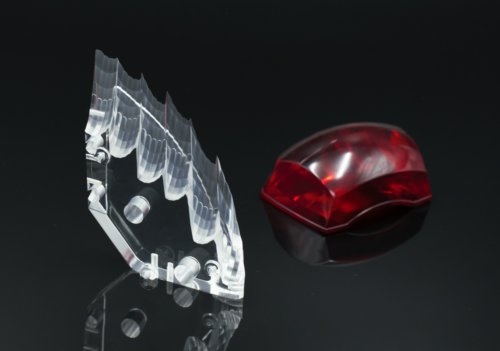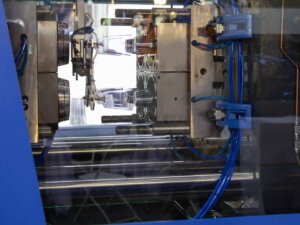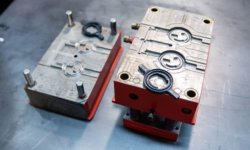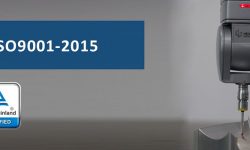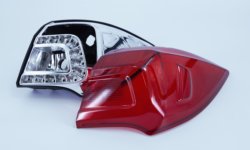Ordering your first batch of prototypes can be a daunting prospect, especially if you are unfamiliar with the company that will build them. But working with a prototyping company needn’t be a difficult experience once you know what to look out for.
This article tells you what to expect from companies that build prototypes. It highlights the main differences between fabricating your own prototypes and having them manufactured by a prototyping specialist. It also offers advice on how to make the partnership as seamless as possible, from simple design principles to effective communication strategies.
As prototyping experts ourselves, the team at 3ERP has worked with numerous startups and small companies making prototypes for the first time.
What companies make prototypes?
Before preparing a prototype that will be built by a prototyping partner, it is important to understand how companies that make prototypes work.
Firstly, prototyping is not the same as production. Prototypes are draft versions of parts that are used during product development; they can be used for feasibility testing, demonstrations, investor pitches and other tasks, but they are not sold to a customer or used for a functional end purpose.
Common uses for prototypes:
- Testing and evaluation
- Production run-through
- Market research
- Investor pitches
- Patenting
Because prototypes are only used for tasks like testing and demonstrating, they are rarely needed in large numbers. Most prototypes are built in volumes of no more than 100 units, and many are simply one-off items.
A prototyping company does not therefore necessarily need a factory capable of mass production. Instead, prototyping (and rapid prototyping) companies tend to offer a wide range of manufacturing processes — CNC machining, 3D printing, a range of surface finishing procedures, etc. — with a focus on building small batches and one-off parts in the shortest possible time.
That being said, many companies do offer both prototyping services and production services. 3ERP, for example, carries out prototyping and short-run production at its facilities, giving customers the flexibility to move from concept to initial production.
In short, companies that build prototypes won’t expect you to order a million units of your part. They will help improve your design, give you tips on how to save money, and potentially offer you a pathway to production at a later date.
Finding a reliable prototyping company
There are many companies that make prototypes out there, and choosing the right one can be difficult — unless you’re willing to place test orders with each and every one.
But picking a reliable CNC shop or other prototyping company ultimately comes down to a few key factors.
A good prototype company should excel in:
Quality control: This means more than just looking over your prototype before shipping it. Proper quality control should be backed by documentation and certification, ensuring that your prototypes have been made in the proper manner from the right materials.
Speed: The fact of the matter is that all product designers need to work quickly, and getting prototypes delivered fast can be critical for gaining an edge in the market. If your prototyping company fails to meet deadlines, look elsewhere.
Customer service: More than just being polite over the phone, good customer service means adapting to new and unusual requests, giving helpful advice and generally going the extra mile to make your prototype a success. Don’t settle for less.
3ERP is known as one of the best prototyping companies in terms of quality, speed, price and service. If you would to get a quote for your prototype projects, please click to upload your files here.
How do you order a prototype?
If you’ve never worked with a prototyping company before, you might not understand how to order a prototype, and you may have several questions: How do I find companies that make prototypes? How much does a prototype cost? How long does a prototype take to build?
In almost all cases, prototyping begins with a request for quotation (RFQ). This is a request sent by you, the customer, to the prototyping company, outlining what you want made.
The prototyping company assesses the request and calculates how much the project would cost based on factors like materials, manufacturing equipment and labor time. They send you the cost breakdown in a document called a quotation (or quote). It is then up to you whether to accept the quoted price and tell the company to start building the prototype.
So what goes on a typical RFQ? These days, most prototyping companies like us use an online form for submitting an RFQ.
The most important part of the request is your digital design file — usually in a common format like STEP or STL — so the prototyping company can see straight away what you want to build. (You can submit a request without a digital file, but it is much harder for the company to provide an accurate quotation.)
You should also include information like: how many units you need, what material you want, whether you need a surface finish, whether you have a strict deadline, and any other requirements that aren’t obvious from the CAD file alone.
The more clear information you provide, the sooner the company can build your prototype.
Ordering a prototype:
- Design your prototype using CAD software
- Send the prototyping company a request for quotation including the digital design & other relevant information
- Accept or reject the quotation you receive
- Pay the prototyping company
- Receive your prototype
Working with companies that make prototypes
Beginners to prototyping may not realize the level of collaboration that is often required between the customer and the prototyping company.
Because even if the company is able to provide a quotation for the project, they may have several issues to discuss before they start prototype machining, 3D printing or molding the item.
Companies that make prototypes may provide feedback on your design, suggesting ways that it can be changed in order to make it easier to build, and they may need further information from you about what you require, perhaps in the form of a technical drawing — an annotated diagram of the part.
Of course, the more effort you put into you initial design, the less time you’ll spend ironing out issues with the prototyping company. So remember to follow design guidelines for your chosen manufacturing method: a CNC machined prototype, for example, needs to be built very differently to a 3D printed one.
Another important step that comes before manufacturing is the signing of a non-disclosure agreement (NDA). This is a contract that prevents the prototyping company from sharing or selling your designs to unknown parties. (Templates for NDAs can be found online.)
Once the design and legal matters are finalized, the prototyping company will begin making your parts in the agreed manner, and they should stipulate probable lead times in advance.
Remember that the fabrication of your prototype might include a mixture of in-house manufacturing and outsourcing to other manufacturers, especially if your prototype contains several distinct components. However, the prototyping company should tell you up front if they plan to use a third party.
The company may also provide you with updates throughout the process, but this is neither standard nor necessary.
Most prototyping companies offer some level of guarantee if parts are damaged or faulty.
How to outsource prototypes from China
The global market is changing, but China probably still offers the best balance between quality and value in the prototyping world.
Of course, for Western startups, finding a Chinese company that makes prototypes can be an even more daunting task than finding a local supplier.
Here are some tips on outsourcing prototyping to China:
Visit the company if possible: This is obviously difficult for most overseas buyers, but if you’re serious about building a long-term connection with a company that builds prototypes, you might want to see exactly what you’re dealing with.
Interrogate the company: Ask as many questions as you can think of, either over the phone or by email. Get technical. If the company doesn’t understand all your requirements, you’re going to have problems down the line.
Check their certifications: ISO certifications indicate that a company has passed an audit by an independent body. Certifications don’t tell the whole story, but they’re a good place to start.
Is it worth it?
A high-quality prototype can make a huge difference to the success of your product, whether it’s for testing purposes or for showcasing to an audience.
Better prototypes work better, making them more faithful surrogates for your final parts, and they look and feel better, making them more appealing to customers and potential investors.
Because of this, forming solid partnerships with companies that build prototypes can be much more beneficial than attempting to build an amateurish prototype in house.
Contact 3ERP for a free quote for your prototype.
